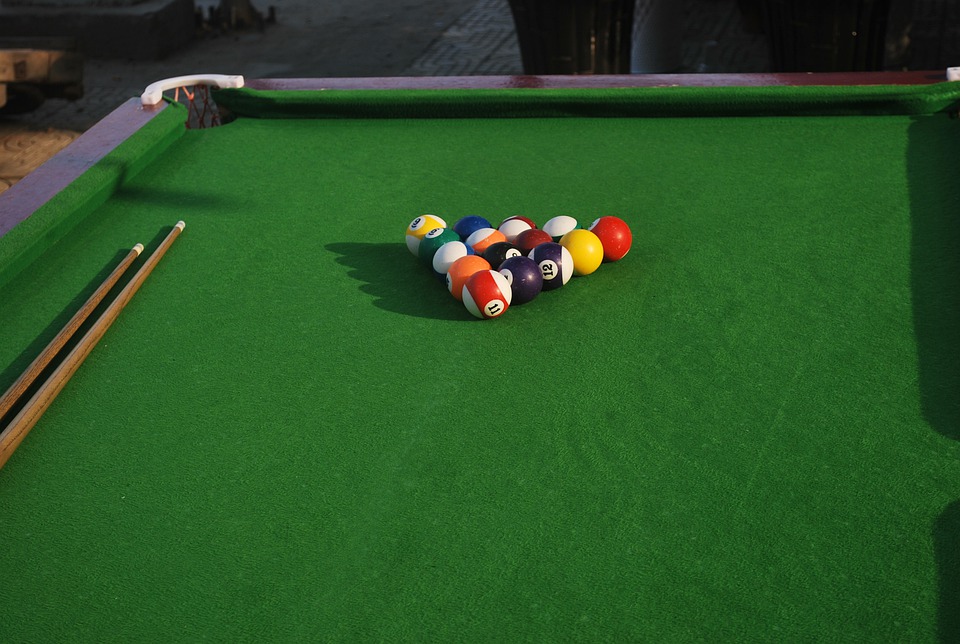
So the big question, how long does it take to become an intermediate level player?
The satisfying crack of the cue ball, the dancing of striped and solid balls, watching the eight ball disappear into the pocket – pool is a game that’s equal parts skill and strategy. But how long does it take to shed the “bar-banger” label and step into the realm of intermediate play? There’s no one-size-fits-all answer, but let’s explore the factors that influence your pool journey in much greater detail.
Time Commitment: A Balancing Act
While there’s no magic number of hours, dedication is key. Aim for consistent practice, even if it’s just a few sessions per week. Here’s a loose roadmap we discussed earlier:
- Casual Player: A couple of hours a month will keep you comfortable with basic shots.
- Dedicated Beginner: Aim for 3-5 hours weekly, focusing on fundamentals and drills. This could take 3-6 months to see a noticeable improvement.
- Intermediate Aspirations: With 5-10 hours of committed practice each week, you could reach intermediate territory within 1-2 years.
Remember, quality over quantity. Focused practice with drills and specific goals will accelerate progress compared to just playing random games. Here’s where we delve deeper:
Practice Makes Progress: Drills for Every Skill
- Stroke Drills: Mastering a smooth, consistent stroke is the foundation of every good shot. Practice pendulum strokes, maintaining perfect cue alignment and following through without jerking.
- Aiming Drills: Train your eye for precise aiming. Use ghost balls (imaginary balls) to visualize shot paths and practice sinking balls from various positions on the table.
- Pocketing Drills: Hone your pocketing skills with drills like straight-in shots, one-pocket drills, or aiming for specific pockets at varying distances.
- Positional Play Drills: Practice leaving the cue ball in advantageous positions for your next shot. Drills like the “three-rail carom” or “pattern racks” teach you to control the cue ball after contact.
- Break Shot Drills: Master the break by focusing on controlled power and cue ball placement. Practice breaking with different speeds and using techniques like the “center ball break” or the “rail first break.”
Strategize Like a Shark: Beyond the Basics
Understanding basic shot mechanics is only half the battle. Here are some strategic concepts to elevate your game:
- Safety Play: Don’t just attack; learn to use safety shots when necessary. Techniques like the “block shot” or the “cue ball in hand” can prevent your opponent from scoring and give you a tactical advantage.
- Pattern Recognition: Develop the ability to recognize patterns on the table. Analyze ball positions and anticipate how they’ll scatter after the break or following your next shot.
- Banking and Kicking: Learn how to utilize the cushions (rails) to your advantage. Practice banking shots (caroming off a cushion) and kicking shots (using the cushion to deflect the cue ball) to reach tricky positions or pocket hard-to-reach balls.
- Spin Techniques: Master basic spin techniques like draw (backspin) and follow (forespin) to control the cue ball’s trajectory and position after contact. Draw allows for finer control, while follow allows for increased power and distance.
- Psychological Play: Pool is as much mental as it is physical. Learn to manage your emotions, stay focused under pressure, and even use tactics like shot selection or body language to influence your opponent’s thinking.
The Mental Game: Sharpening Your Focus
Developing a strong mental game is crucial for consistent improvement. Here are some tips:
- Visualization: Visualize successful shots before you attempt them. Imagine the cue ball’s path, the cue action, and the desired outcome. This mental rehearsal can improve accuracy and confidence.
- Routine Development: Establish a pre-shot routine that includes deep breaths, focusing on the target ball and the cue path, and a smooth stroke execution. This routine helps maintain focus and consistency.
- Positive Reinforcement: Celebrate your successes, no matter how small. Acknowledge your progress and reward yourself for achieving milestones.
- Learn from Mistakes: Analyze your mistakes on the table and during practice. Identify the root cause and work on drills to rectify the issue. Don’t dwell on failures; use them as learning opportunities.
- Patience and Persistence: Improvement takes time. Don’t get discouraged by setbacks. Be patient, persistent, and enjoy the journey of becoming a better pool player.
Essential Skills: https://billiardsguru.com/5-essentail-skills-to-elevate-your-game/
Get the right stick for your level (good sticks): https://www.predatorcues.com/usa/pool-cues.html
Conclusion: Enjoy the Journey
The path to becoming an intermediate pool player is a rewarding adventure. While the estimated timeframe can range from 1-2 years with dedicated practice, remember, this is just the beginning. Pool offers a lifetime of learning and refinement.
Embrace the challenge. Seek out opportunities to play against more experienced players, watch professional matches, and explore online resources and instructional videos. Most importantly, have fun! The camaraderie, the strategic thinking, and the thrill of a well-executed shot – these are the true treasures of the game.
So, grab your cue, take a deep breath, and step up to the table. With dedication, the right approach, and a love for the game, you’ll be well on your way to joining the ranks of intermediate pool players. Remember, the journey is just as important as the destination. Rack ’em up!
Discover more from Billiards and Pool
Subscribe to get the latest posts sent to your email.